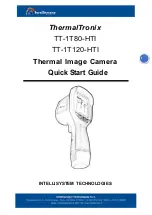
13
Glossary of Terms
Codec -
In communications engineering, a codec is usually a coder/decoder. Codecs are used
in integrated circuits or chips that convert e.g. analog video and audio signals into a
digital format for transmission. The codec also converts received digital signals back into
analog format. A codec uses analog-to-digital conversion and digital-to-analog conversion
in the same chip.
Codec can also mean compression/decompression, in which case it is generally taken to mean
an algorithm or computer program for reducing the size of large files and programs.
Frame -
A frame is a complete video image. In the 2:1 interlaced scanning format of the
RS-170 and CCIR formats, a frame is made up of two separate fields of 262.5 or 312.5 lines,
interlaced at 60 or 50 Hz to form a complete frame, which appears at 30 or 25 Hz. In video
cameras with a progressive scan, each frame is scanned line-by-line and not interlaced;
most are also displayed at 30 and 25 Hz.
Frame Rate -
The frame rate used to describe the frequency at which a video stream is updated
is measured in frames per second (fps). A higher frame rate is advantageous when there is
movement in the video stream, as it maintains image quality throughout.
Image Compression -
Image compression minimizes the file size (in bytes) of an image. Two
of the most common compressed image formats are JPEG and GIF.
JPEG (Joint Photographic Experts Group) -
Together with the GIF file format, JPEG is an
image file type commonly used on the web. A JPEG image is a bitmap, and usually has “.jpg”
or ".jpeg" as the file suffix. When creating a JPEG image, it is possible to configure the
level of compression. As the lowest compression (i.e. the highest quality) results in the
largest file, there is a trade-off between image quality and file size.
NTSC (National Television System Committee) -
NTSC is the television and video standard
in the United States. NTSC delivers 525 lines at 60 half-frame per second.
PAL (Phase Alternating Line) -
PAL is the dominant television standard in Europe. PAL delivers
625 lines at 50 half-frames per second.
Pixel (Picture Element) -
A pixel is one of the many tiny dots that make up a digital image.
The color and intensity of each pixel represents a tiny area of the complete image.
USB (Universal Serial Bus) -
A plug-and-play interface between a computer and peripheral
devices, such as scanners, printers, etc.


































